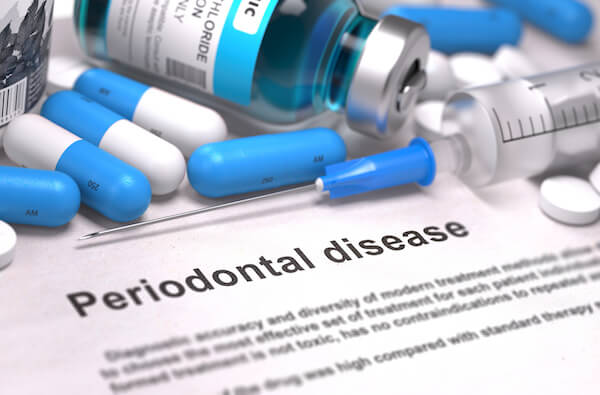
Common Types of Periodontal Disease
Periodontal disease, more commonly known as gum disease, is a condition in which the gums are infected with bacteria resulting in swollen or bleeding gums. In addition to potentially causing the loss of teeth, periodontal disease also has been linked to other, more serious medical issues such as heart disease, stroke, premature birth, diabetes, and respiratory disease. There are two different stages of periodontal disease, each based on the severity of the condition. The earliest stage, gingivitis, is the less serious type of periodontal disease while periodontitis is the more advanced type of the disease. Additionally, there are several types of periodontitis.
Gingivitis
The earliest and mildest type of gum disease is gingivitis. Despite the fact that there is usually little to no discomfort, the gums may become red, swollen, or may bleed easily during this stage. The most common cause of gingivitis is a lack of oral hygiene care and this condition is usually reversible through professional treatment and by practicing good oral care at home. In addition to poor oral care, other factors that can result in gingivitis include diabetes, smoking, aging, genetic predisposition, systematic diseases and conditions, stress, poor nutrition, puberty, hormonal fluctuations, pregnancy, substance abuse, HIV infection, and the use of certain medications.
Periodontitis
If gingivitis goes untreated, it has the ability to worsen and turn into periodontitis. When plaque is present and is not removed through good oral habits, it can spread down below the gum line over time. The toxins that are produced by the bacteria that exists in plaque will irritate the gums and stimulate a chronic inflammatory response. If this happens, the body turns against itself breaking down and destroying the tissues and bones that support the teeth.
Once the gums have been infected, they separate from the teeth and form pockets, or spaces in between the gums and the teeth, that can become infected. As the disease continues to worsen, the pockets that have been formed deepen and the destruction of more gum tissue and bone occurs. While this stage of the disease typically has very mild symptoms, the teeth may become loose over time and eventually need removal.
There are seven different categories of periodontal disease to can develop, six of which are considered periodontitis. These include gingivitis, chronic periodontitis, aggressive periodontitis, periodontitis as a manifestation of systemic disease, necrotizing periodontal disease, abscesses of the periodontium, and combined periodontic-endodontic lesions. The four most common of these categories are aggressive periodontitis, chronic periodontitis, periodontitis as a manifestation of systemic diseases, and necrotizing periodontal disease.
Aggressive Periodontitis
Aggressive periodontitis typically occurs in patients that are otherwise clinically healthy. Those that suffer from this category of periodontitis typically see rapid attachment loss, bone destruction, and familial aggregation.
Chronic Periodontitis
Of all seven of the categories of periodontal disease, this is the one that occurs most frequently. Those that deal with chronic periodontitis typically experience inflammation of the teeth-supporting tissue, progressive attachment, and bone loss. This category typically results in the formation of periodontal pockets and/or the recession of the gums. This type of periodontitis occurs in people of any age but most frequently affects adults. The progression of detachment can be rapid but generally occurs quite slowly.
Periodontitis as a manifestation of systemic diseases
Over the years, studies have linked periodontal disease with several other, sometimes more damaging diseases. While the links through these studies have been quite conclusive, there is no clear evidence that periodontitis has a direct effect on these diseases. The modification of the severity of the diseases in question are effected by the effect on the immune system and inflammatory mechanisms. Some of the most common diseases associated with periodontitis are heart disease, respiratory disease, and diabetes.
Necrotizing Periodontal Disease
Necrotizing periodontal disease is an infection of the gums that is characterized by narcosis, the death of most or all cells in an organ or tissue because of disease, of the gingival tissue, periodontal ligament, or alveolar bone. This category of periodontal disease most commonly accompanies systemic conditions such as HIV infection, malnutrition, and immunosuppression.
Periodontal disease is an infection that has the ability to advance through stages of seriousness. It starts with gingivitis and advances to periodontal disease. There are seven categories of periodontal disease, each with their own characteristics. If you have signs of periodontal disease, come to Vero Implants and Periodontics for treatment.